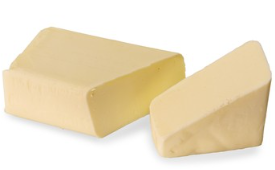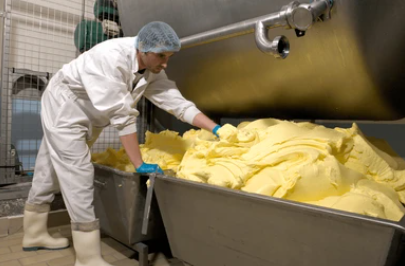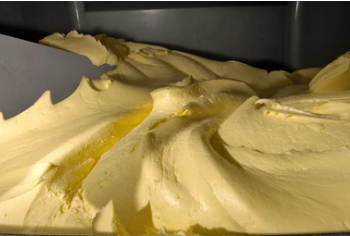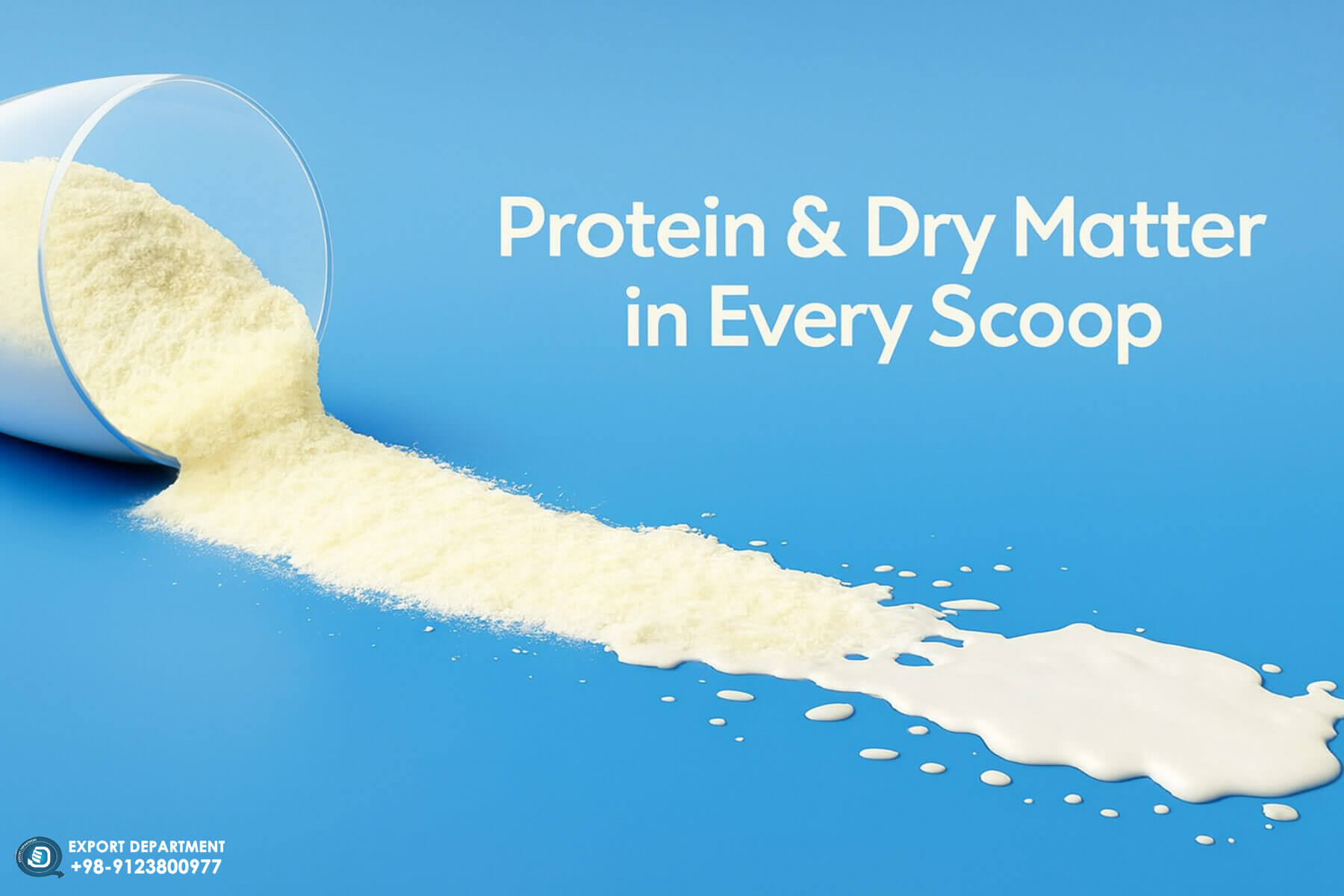Insights into Different Types of Butter: Exploring the World of Butter
Discover the fascinating world of butter with insights into different types of butter! Learn about the unique characteristics and find out why butterfat content matters. Get expert information and explore your butter options today.

Butter, a staple ingredient in kitchens around the world, comes in various forms and flavors. Understanding the nuances of different types of butter can elevate your culinary experience, while also finding applications in various industries. In this comprehensive guide, we'll take you on a journey through the world of butter varieties, providing insights into each type's characteristics, uses, export information, and more. Don't forget to explore the premium chaltaFarm creamery butter, which offers you a superior experience with its remarkable butterfat content and optional salt.
The Ancient Origins of Butter
Let's be honest—almost everyone adores butter! It's an incredibly versatile ingredient for both cooking and baking. With just a small amount of butter, you can transform an ordinary dish into something truly delightful.
Butter is rich in a variety of essential nutrients, including vitamins A, E, and B12, as well as other beneficial compounds like butyrate and alpha-linolenic acid (an omega-3 fatty acid). While butter is high in fat and calories, it's relatively low in omega-6. When consumed in moderation and as part of a balanced diet, especially alongside other heart-healthy fats, butter can be a valuable addition.
Many believe that ancient nomadic people were the first to discover the miracle of butter. It is thought that while traveling long distances, nomads would attach sacks containing milk to their pack animals, and over time, the cream would naturally churn into butter.
A Sumerian tablet dating back to 2,500 BCE, from ancient Mesopotamia, provides evidence of rudimentary dairy production. The tablet vividly depicts the milking of cows, showcasing the early art of butter-making. This discovery of butter-making had a profound impact on the development of human culture. The picture below depicts a woman churning butter in 1893.

Butter's ascent to prominence occurred during the Middle Ages when it became a staple product in northern Europe. While some upper classes regarded it as peasant food, they also indulged in it occasionally. Interestingly, during Lent, the consumption of butter was prohibited. Many in northern Europe chose to pay the fee imposed by the Catholic Church, which granted them permission to enjoy butter during this period. This historical practice is why the tower on the Rouen Cathedral in France is affectionately nicknamed the "Butter Tower".
The industrialization of butter
Butter was hand-made up until the 19th century. The United States was the first to implement factories in the 1860s. At the end of the 1870s, Swedish engineers introduced the centrifugal cream separator.
Butter Manufacturing Process
Industrial butter is a widely produced dairy product typically manufactured in large-scale facilities. The process of making industrial butter begins with the collection of fresh cream from dairy farms. This cream is first pasteurized to eliminate any harmful bacteria, ensuring product safety. Once pasteurized, the cream is then cooled and allowed to ripen, developing its characteristic flavor profile.

Next, the cream is transferred to a churn, which is a large mechanical device designed to agitate the cream vigorously. This churning process causes the fat globules in the cream to clump together and separate from the liquid portion, known as buttermilk. After thorough churning, the resulting solid mass is carefully drained of excess buttermilk and then extensively washed to remove residual buttermilk. The resulting product is industrial butter, which can be further processed, packaged, and distributed for various culinary and commercial applications.

Fats Definitions:
Milkfat: Milkfat refers to the lipid components naturally present in milk, as produced by cows. It is also found in commercial milk and milk-derived products, primarily consisting of triglycerides.
Butterfat: Butterfat is almost synonymous with milkfat. It encompasses all the fat components in milk that can be separated through churning.
Anhydrous Milkfat (AMF): Anhydrous Milkfat, often abbreviated as AMF, represents the commercially prepared extraction of cow's milk fat. It can be found in bulk or concentrated form and consists of 100% fat. However, it may not include all the lipid components found in milk.
Butteroil: Butteroil is a term that is often used interchangeably with anhydrous milkfat. In the fats and oils field, the distinction between oil and fat is typically based on whether it is liquid at room temperature or solid. However, this categorization can be somewhat arbitrary.
Butter: Butter is a water-in-oil emulsion, comprising more than 80% milk fat. It also contains water in tiny droplets, and it may include some milk solid-not-fat. Its texture is achieved through processing at specific temperatures, involving working and kneading to establish a fat crystalline network that results in the desired smoothness. Butter is commonly used as a spread, a cooking fat, or an ingredient in baking.
Insights into different types of butter!
Cultured & Sweet Cream Butter
Sweet Cream Butter is butter made from fresh cream. It can be salted or unsalted. This is the standard butter as those in the US, UK, Australia, and many other countries outside of the European mainland know it. Sweet cream butter is mild and creamy in flavor and is produced by churning pasteurized cream (ie. cream made from milk that has been sterilized by heat treatment) until the buttermilk separates from the butterfat. As the butterfat is churned, or agitated, the fat cells clump together until one solid mass of butter is formed. It has a neutral, sweet flavor and it typically has a smoother and more uniform texture. Sweet cream butter is versatile and often used in baking, pastries, and general cooking where a neutral butter flavor is desired. It's also a common choice for spreading on bread or toast due to its mild taste.
Cultured butter Known as a European-style butter is made with pasteurized cream in a churn just like regular butter, but with one added step. After pasteurization, the cream is fermented by adding a carefully selected bacterial culture. The bacteria will then turn the lactose (milk sugar) in the cream to lactic acid, sinking the pH level of the cream and giving the butter its signature slightly tangy taste. The cream rests for one day in a vat to allow the culture to produce a complex blend of flavor compounds. This is the source of the flavor difference between cultured butter and sweet cream. After the fermentation, the cream is churned into butter. It, too, comes in salted and unsalted varieties. This fermentation process gives it a slightly tangy or cultured flavor. Lactic butter may have a slightly more granular texture due to the fermentation process. It can add depth and complexity to sauces, particularly in French cuisine. It's also used in some traditional dishes where the tangy flavor complements the overall taste, such as in certain Scandinavian and Eastern European recipes.
In summary, while both sweet cream butter and lactic butter can be used in a variety of culinary applications, the choice between them often depends on the desired flavor profile in a specific dish. Sweet cream butter is neutral and suits many recipes (Sweet cream butter, can be a better choice for recipes where acidity is not desired) while lactic butter offers a distinct tangy taste that can enhance certain dishes. Certainly, both sweet cream butter and lactic butter are used for various applications in Bakeries, Biscuits and pastries, Chocolate and Confectionery, Dairy products, meat, soups, and ready-cooked meals.
Sweet cream butter and cultured butter have slightly different shelf lives. The main reason for this is the fact that cultured butter is made by fermenting, making it more sensitive to spoilage. The bacteria in the butter can continue to ferment and cause the butter to spoil faster.
Also, the cost of sweet cream butter and cultured butter can vary depending on a variety of factors, such as the production method, the brand, and the region. In general, cultured butter tends to be more expensive than sweet cream butter, primarily due to the additional time and resources required to make it.
Salted & Unsalted Butter
Butter comes either salted or unsalted. Although all salted butter contains some amount of salt (salt used to be added as a preservative, but today it’s added primarily for flavor). The amount of salt can vary from butter to butter. But, here's a good rule of thumb to following when pivoting between the two types of butter:
Salted butter typically contains 1-2% salt by weight, or about a 1/4 teaspoon of salt per stick.
1/2 cup (1 stick) salted butter = 1/2 cup (1 stick) unsalted butter + 1/4 teaspoon of salt.
Salted butter can be refrigerated for up to two months, whereas unsalted should be consumed within two to three weeks. Both can be used in cooking; however, using unsalted butter allows you to better control the level of saltiness in a dish, especially since different producers may salt their butter differently.
European & American Butter
The minimum butterfat content found in American butters is 80%. Products with butterfat below 80% cannot be labeled "butter," and are often called spreads instead. Along with 80% butterfat, the average butter sold in the United States contains about 16-18% water and 2-4% additional components, such as milk solids and sometimes salt.
The minimum butterfat content for "European-style" butter sold in the United States is 82%, and these butters can range from 82-86% butterfat. Though 2 percentage points may not seem like much on paper, the slightly higher butterfat content of these butters makes a big difference in quality, flavor, and texture when compared to American butter. Butters with 82% or higher butterfat tend to have a much richer and fuller flavor than their lower butterfat counterparts.

ChaltaFarm Creamery Butter: The Premium Choice
At ChaltaFarm, our creamery butter is available in a convenient 25 kg package with a remarkable 82% butterfat content. Additionally, we offer the option of salt, allowing you to tailor your industrial or factory needs to perfection.
Butter Exports by Country
In 2021, international butter exports from all countries reached a total of $7.64 billion. Overall, the value of butter exports globally increased by an average of 5.4% for all exporting countries since 2017 when butter shipments were valued at $7.25 billion. Year over year, the value of globally exported butter saw a significant increase of 19.4% compared to $6.4 billion in 2020. The top five most profitable exporters of this dairy product are the Netherlands, Ireland, New Zealand, Germany, and Belgium. Together, these leading dairy exporters accounted for nearly two-thirds (64.5%) of the world's butter exports in 2021.
Among continents, European suppliers led the way in butter exports in 2021, with shipments valued at $5.88 billion, representing over three-quarters (77%) of the global total. New Zealand, Australia, and Fiji in Oceania came in second place, with a combined share of 16.5%. Here is a list of the top 15 countries that exported the highest dollar value of butter in 2021:
Netherlands: $1.26 billion (16.4% of total butter exports)
Ireland: $1.24 billion (16.3%)
New Zealand: $1.17 billion (15.3%)
Germany: $630.4 million (8.3%)
Belgium: $628.2 million (8.2%)
France: $504.3 million (6.6%)
Belarus: $401.4 million (5.3%)
Denmark: $296.9 million (3.9%)
Poland: $234.2 million (3.1%)
United States: $177.9 million (2.3%)
United Kingdom: $163.8 million (2.1%)
Finland: $144.7 million (1.9%)
Australia: $93.7 million (1.2%)
Italy: $81.7 million (1.1%)
Portugal: $75.5 million (1%)
These 15 countries accounted for 93% of the total global butter exports in 2021.
Butter Exporting Companies
Below are global butter-producing cooperatives and multinational dairy companies.
-
Arla Foods (Viby, Denmark)
-
Fonterra (Auckland, New Zealand)
-
Lactalis (Laval, France)
-
Müller (Fischach, Germany)
-
Parmalat (Collecchio, Italy)
-
Zott (Mertingen,Germany)
Top Butter-Producing Countries in 2022
In 2022, India took the lead in butter production, with an impressive output of over six million metric tons, making it the highest butter-producing country for the year. Following closely in second place was the European Union, which produced approximately 2.1 million metric tons of butter. The chart below shows Major butter-producing countries worldwide in 2022 (in 1,000 metric tons).

Why does butterfat matter?
Butterfat is a key factor in butter's overall quality. Higher butterfat content, typically 82% or more, results in better butter. It enhances the richness and smoothness of the butter, provides a pleasing texture, and contributes to its color. Butter with 82% or higher butterfat content has a softer, smoother, melt-in-your-mouth texture without feeling greasy. They cut clean when sliced, whereas lower butterfat butters often crumble or end up with jagged edges when cut into Moreover, butterfat contains essential fat-soluble vitamins like A and E, making higher butterfat butter more nutrient-dense.
Read More: What makes butter turn yellow?
What are the key characteristics that define high-quality butter?
High-quality butter exhibits certain distinctive characteristics. It should possess a consistent color, a dense texture, and a clean taste. The water content should be evenly distributed in fine droplets, giving the butter a dry appearance. Additionally, its consistency should be smooth, making it easy to spread and causing it to melt readily on the tongue.
What are the primary components found in typical salted butter?
The primary constituents of regular salted butter include fat (80 – 82%), water (15.6 – 17.6%), salt (approximately 1.2%), and trace amounts of protein, calcium, and phosphorus (around 1.2%). Additionally, butter contains fat-soluble vitamins A, D, and E.
Can you convert butter back into cream?
Yes, it is possible to turn butter into cream, and it's a relatively straightforward process. All you need to do is melt the butter and then mix it with either buttermilk or whole milk.
How much cream is required to produce one pound of butter?
To make one pound of butter, you will need one quart of cream. This means that you will end up with approximately half as much butter as the amount of cream used, along with about two cups of liquid, which is typically buttermilk.
To contact the Chaltafarm Dairy Export Department, please refer to the Contact Us section.
| Science Behind Butter: How Butter Is Made – BTTRKitchen |
| Leading countries in butter production worldwide 2022 | Statista |
| Everything You Want to Know About Butterfat | Nellie's Free Range (nelliesfreerange.com) |
| All About Cultured Butter | Vermont Creamery |
| Butter Exports by Country 2021 (worldstopexports.com) |
| Butter Manufacture – Dairy Science and Technology eBook (uoguelph.ca) |
| Cultured, Sweet-Cream, or Clarified? Our Ultimate Guide to Butter Styles | Stories | Kitchen Stories |



.jpg)


.jpg)